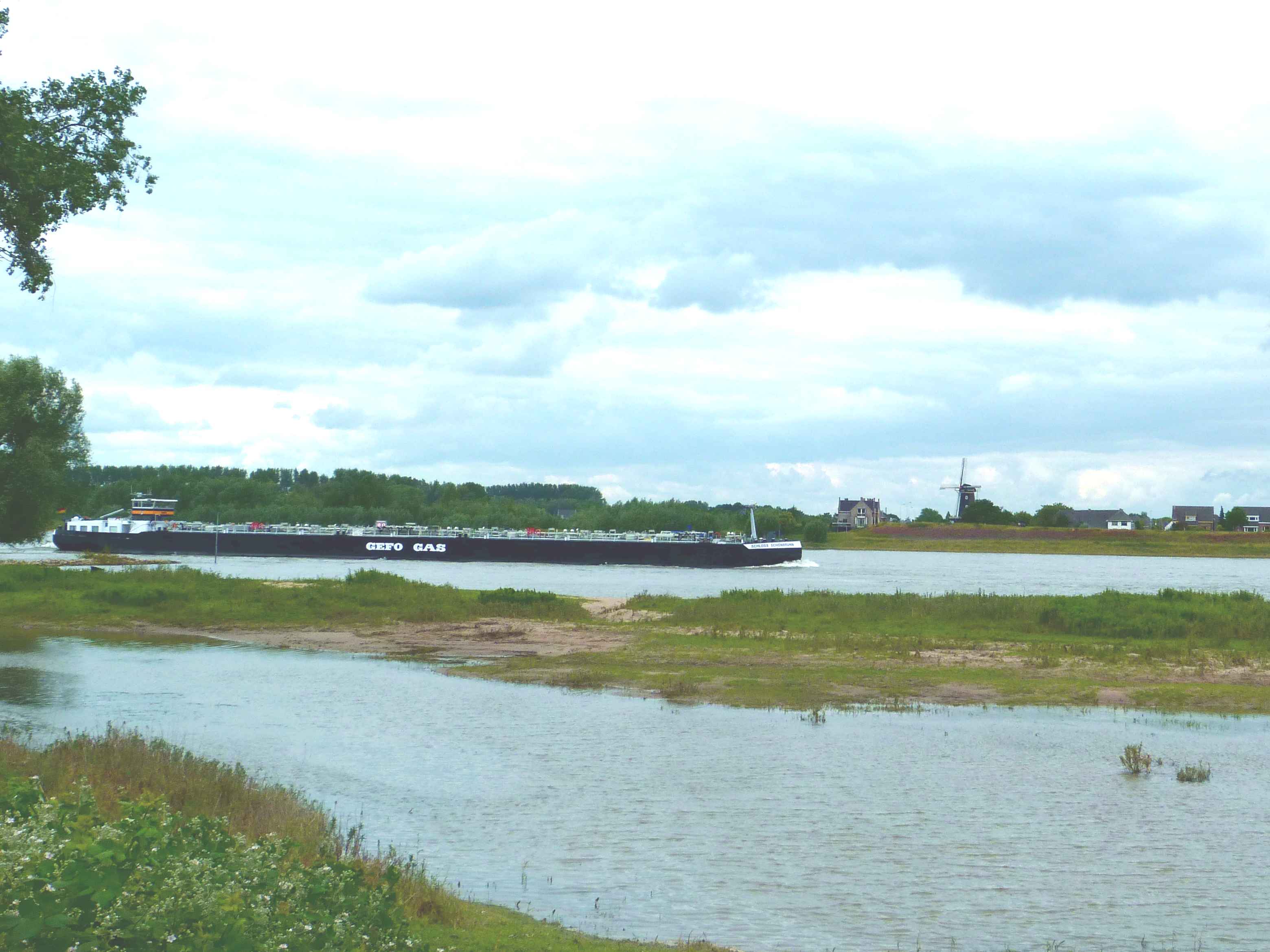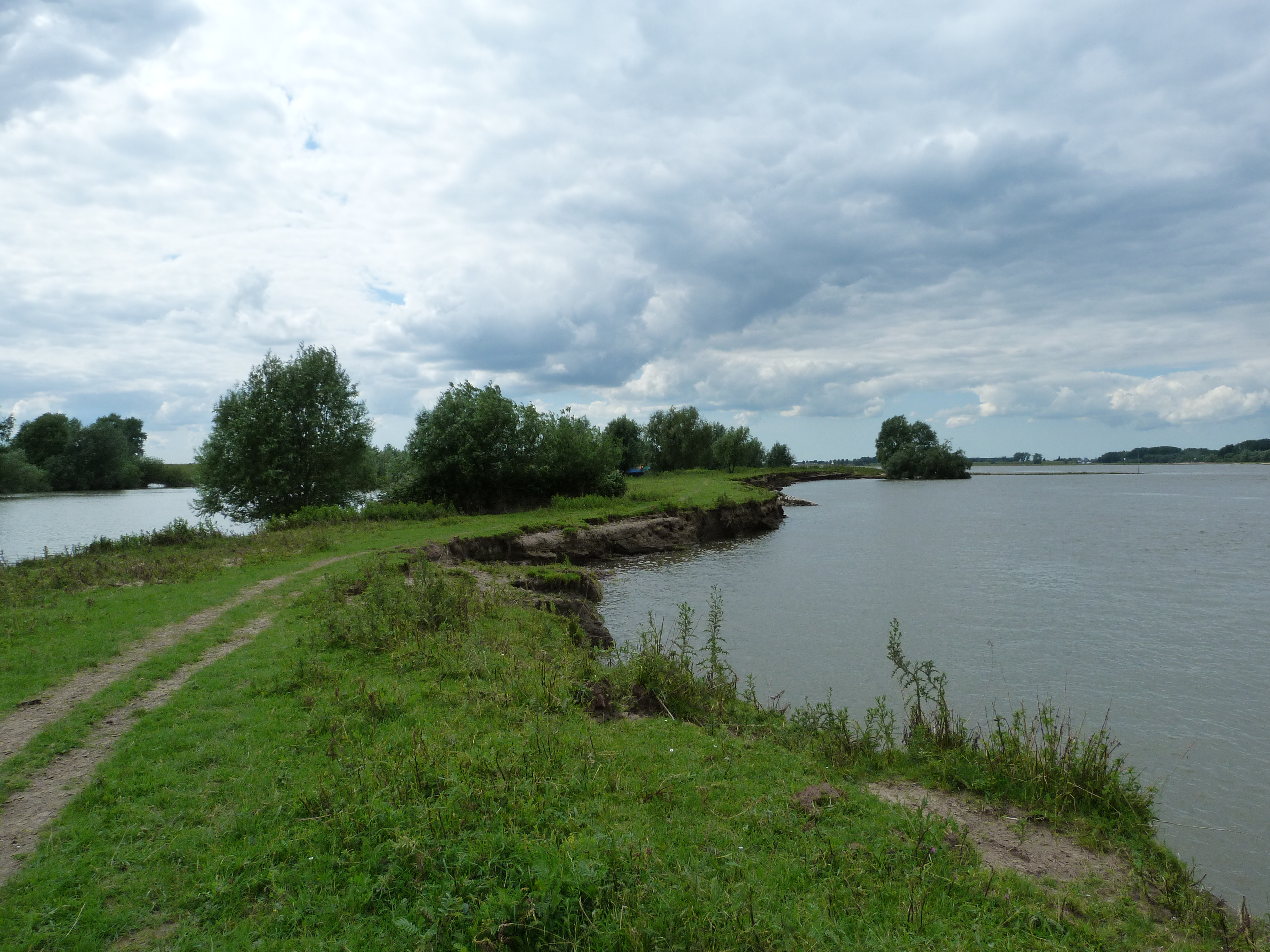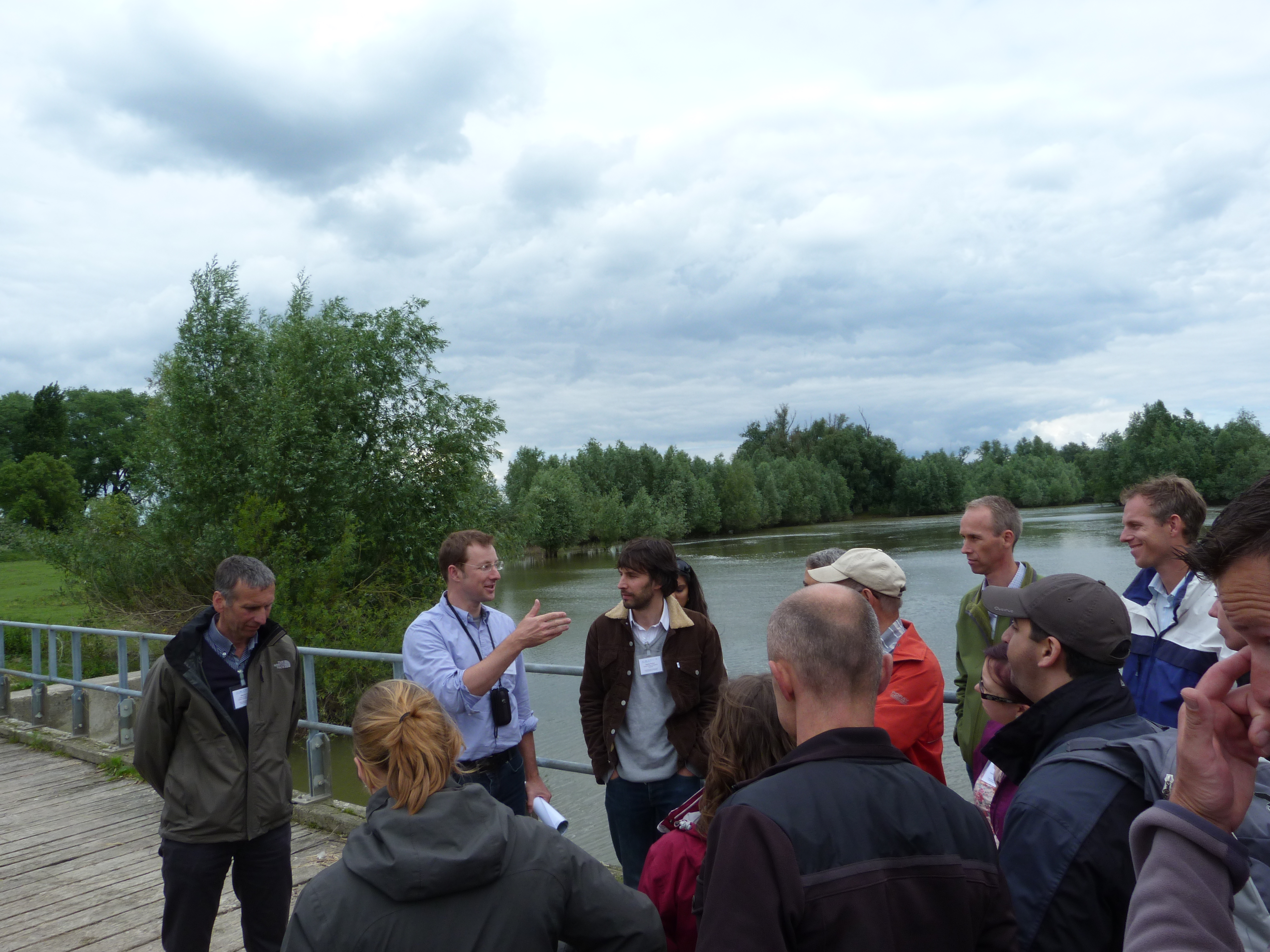Room for the River as antidote to Europe’s flood woes
Making Room for the River
As we stood along the Waal River, a steady flow of barges steamed up and down the river from Rotterdam, the busiest port in Europe. Despite over 16,000 kilometres of dikes (an embankment used to control water) in the Netherlands, we weren’t standing on one. Instead we were on the beach of a restored side channel, and the wakes from the barges broke along the sand at our feet.

The Waal has been diked since the 13thCentury. Floodplains that would naturally extend up to 40 kilometres on each side of the river are constrained to prevent flooding and aid navigation. However, flooding in the early 1990’s catalysed a rethinking of flood protection in the Netherlands. The old approach would have been to raise the dykes even higher to guard against floodwaters that are predicted to occur more frequently. But higher dykes are expensive to maintain and also pose a greater risk of catastrophe should they fail – as seen repeatedly in Central Europe last month. So instead of raising the dykes, the Dutch decided to make Room for the River.
In the most densely populated country in Europe, with two-thirds of the population at risk from flooding, this is a revolutionary concept. In practical terms, it has meant moving the dikes back in some places and increasing the capacity of the Waal to carry more water. Productive lands that have been farmed for generations are being bought out and turned into floodplains, wetlands and side channels up and down the river, where high waters can now spread out instead of threatening to spill over the tops of dikes.
Benefits beyond flood protection
In addition to decreasing the risk of floods, the large scale restoration of floodplains has created a healthier and more attractive landscape with opportunities for nature and recreation. Formerly closed floodplains are now open to the public. Swimming, biking, hiking and bird watching have taken off. As we walked, we encountered a steady stream of dog walkers, hikers and cyclists, and an intrepid group of teenagers who had been inner tubing in the brisk waters.
By restoring natural features and processes to the river, such as wetlands, animals and plants are moving back in. Species of birds such as spoonbills are back along the river and the naturally eroding river banks are providing nesting habitat for sand martins (below).

Green Infrastructure lessons for Europe
High waters surging through the side channel were a reminder of last month’s flooding in Central Europe’s Danube and Elbe River Basins. The flooding in Germany, Austria, Switzerland, and parts of Hungary and the Czech Republic caused billions of euros in damages and several deaths.
While in many places this was the worst flooding in hundreds of years, the climatic conditions that created this perfect storm may be sticking around for years to come. The European Environment Agencyconcludes that these events are likely to increase for several reasons including climate change. It predicts that “rising temperatures in Europe will intensify the hydrological cycle, leading to more frequent and intense floods in many regions.”
While many things contributed to the recent floods, the loss of floodplains is an overwhelming factor. According to the European Environmental Agency, “conversion of floodplains for farming and other development has dramatically reduced the size of the Danube system floodplains.” 95% of the Upper Danube and 75% of the Lower Danube floodplains are cut off by dikes. “This has increased the risk of
According to the European Environmental Agency, “conversion of floodplains for farming and other development has dramatically reduced the size of the Danube system floodplains.” 95% of the Upper Danube and 75% of the Lower Danube floodplains are cut off by dikes. “This has increased the risk of
floods and pollution in the region, threats that are expected to rise with climate change.”
Instead of rushing to build even higher dikes, the rest of Europe should take notice of Room for the River and other examples where green infrastructure is being used to reduce the risk of floods. Restoring the natural functions of floodplains and wetlands offers important lessons for strengthening resilience to floods while coping with a changing climate.
Now is the time to act. In the coming months, EU countries will have several opportunities to put in place guidance and policies that restore floodplains and wetlands by implementing a green infrastructure strategy and developing guidance on natural water retention measures as a part of the Blueprint to Safeguard Europe's Water Resources.
5586